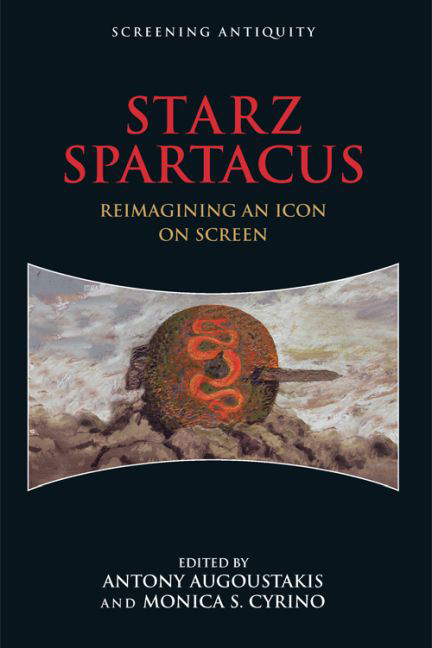Book contents
- Frontmatter
- Contents
- Series Editors' Preface
- Editors' Acknowledgments
- Contributors
- List of Illustrations
- Episode Listing
- Introduction: Reimagining a New Spartacus
- PART I HEROES AND HEROISM
- PART II SOCIAL SPACES
- 5 Upward Mobility in the House of Batiatus
- 6 Social Dynamics and Liminal Spaces
- 7 Building a New Ancient Rome
- PART III GENDER AND SEXUALITY
- PART IV SPECTACLE AND VIOLENCE
- Filmography
- Bibliography
- Index
7 - Building a New Ancient Rome
from PART II - SOCIAL SPACES
Published online by Cambridge University Press: 27 April 2017
- Frontmatter
- Contents
- Series Editors' Preface
- Editors' Acknowledgments
- Contributors
- List of Illustrations
- Episode Listing
- Introduction: Reimagining a New Spartacus
- PART I HEROES AND HEROISM
- PART II SOCIAL SPACES
- 5 Upward Mobility in the House of Batiatus
- 6 Social Dynamics and Liminal Spaces
- 7 Building a New Ancient Rome
- PART III GENDER AND SEXUALITY
- PART IV SPECTACLE AND VIOLENCE
- Filmography
- Bibliography
- Index
Summary
In visual media such as film and television, the physical setting and appearance are of paramount importance both for attracting viewers and convincing them of the reality of the illusion being presented for their enjoyment. With productions set in particular periods or places, the physical set and mise-en-scène provide vital clues as to when and where they are conceived as taking place. Specifically in the case of ancient Rome, there is a long and rich tradition on which to draw, and incorporation of this tradition or deviation from it will signal subconscious messages to the audience and reflect the ideas and agenda of the creators of the production. This chapter demonstrates how STARZ Spartacus both continues and reinvents the depiction of the Roman world onscreen in accordance with twenty-first-century sensibilities.
THE LOOK OF ANCIENT ROME ON THE BIG SCREEN
The celluloid Rome of Hollywood, with its associated visual images, developed early and involved gleaming white marble columns and statues, mosaics, inlaid pools, gilded couches, togas, eagles, and scarlet cloaks. Some of these elements stem from the earliest days of the movie industry. Italian productions led the way, with Quo Vadis (1912), Cabiria (1914), and Theodora (1921) introducing many of the features listed by Juan Antonio Ramirez as traditionally associated with screen depictions of the ancient world. The colossal sets of D. W. Griffith's Intolerance (1916) demonstrated that the United States did not lag behind Italy in producing spectacles set in the ancient world, and movie after movie followed throughout the silent era. Geoffrey O'Brien outlines how the reciprocal nature of filmmaking influenced the appearance of the ancient world on screen, as directors from both countries influenced each other to create what became the accepted look of the period:
It was as close as movies got to a cultural lineage, this process of spirals within spirals by which you got the myth (the real, original Italian epics, Cabiria and Quo Vadis and The Fall of Troy, that took America by storm in 1914) and the myth of the myth (the improved and homogenised American epics, Intolerance and Ben-Hur and The Queen of Sheba, which in turn found their way back to Italian screens) and then, beyond computing, the myths of the myths of the myths, as each photographed the others’ photographs.
- Type
- Chapter
- Information
- STARZ SpartacusReimagining an Icon on Screen, pp. 111 - 130Publisher: Edinburgh University PressPrint publication year: 2017



